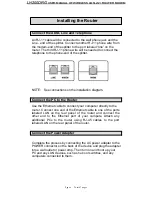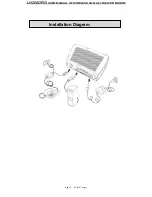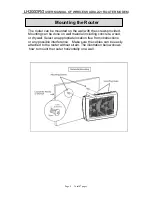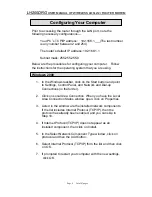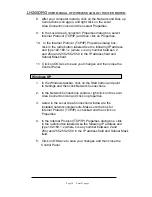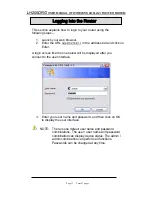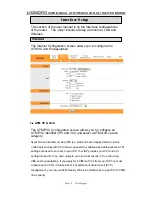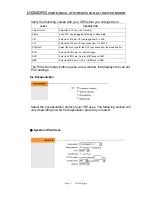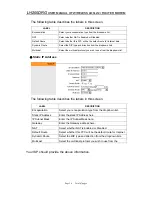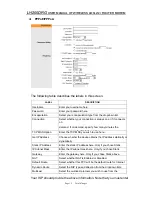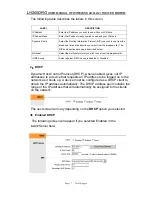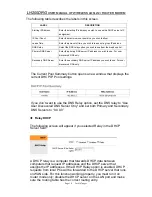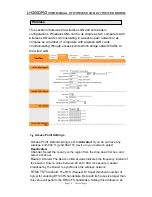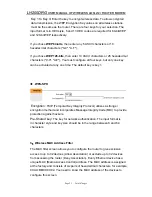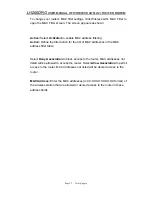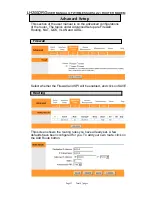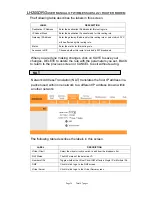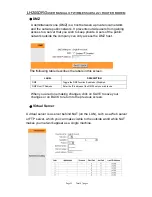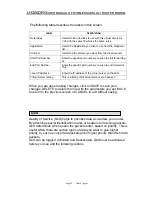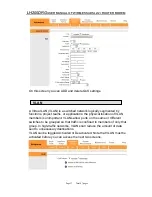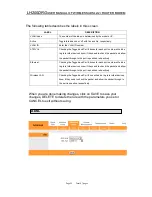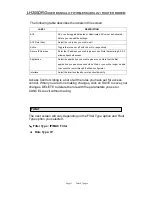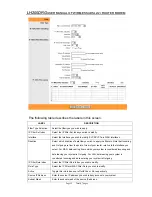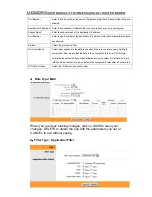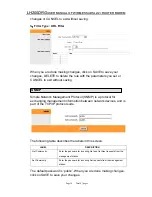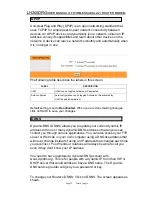
L
L
H
H
2
2
0
0
0
0
D
D
R
R
G
G
U
U
S
S
E
E
R
R
M
M
A
A
N
N
U
U
A
A
L
L
O
O
F
F
W
W
I
I
R
R
E
E
L
L
E
E
S
S
S
S
A
A
D
D
S
S
L
L
2
2
/
/
2
2
+
+
R
R
O
O
U
U
T
T
E
E
R
R
M
M
O
O
D
D
E
E
M
M
larger than the maximum MSDU (MAC service data unit) size turns off the
RTS/CTS handshake. Setting this attribute to zero turns on the RTS/CTS
handshake Enter a value between 1500 and 2347.
Fragmentation Threshold:
The threshold (number of bytes) for the
fragmentation boundary for directed messages. It is the maximum data
fragment size that can be sent. Enter a value between 256 and 2346.
DMIT:
This value, between 1 and 255, indicates the interval of the Delivery
Traffic Indication Message (DTIM).
802.11b/g:
The default setting is
802.11b+g
(Mixed mode). If you do not
know or have both 11g and 11b devices in your network, then keep the
default in
2
、
Multiple SSIDs Settings
SSID:
The SSID is the unique name of a wireless access point (AP) to be
distinguished from another. For security propose, change the default name to
a unique ID name to the AP which is already built-in to the router’s wireless
interface. It is case sensitive and must not excess 32 characters. Make
sure your wireless clients have exactly the SSID as the device, in order to
get connected to your network.
Broadcast SSID:
Select
No
to hide the SSID in so a station cannot obtain the
SSID through passive scanning. Select
Yes
to make the SSID visible so
a station can obtain the SSID through passive scanning.
Authentication Type:
To prevent unauthorized wireless stations from
accessing data transmitted over the network, the router offers highly secure
data encryption, known as WEP.&WPA. If you require high security for
transmissions, there are five alternatives to select from:
Disabled,
WEP-64bits, WEP-128bits, WPA-PSK, WPA2-PSK.
T
he next screen will vary depending on the Authentication
T
ype option
you selected.
WEP
Page 20 Total 47 pages

